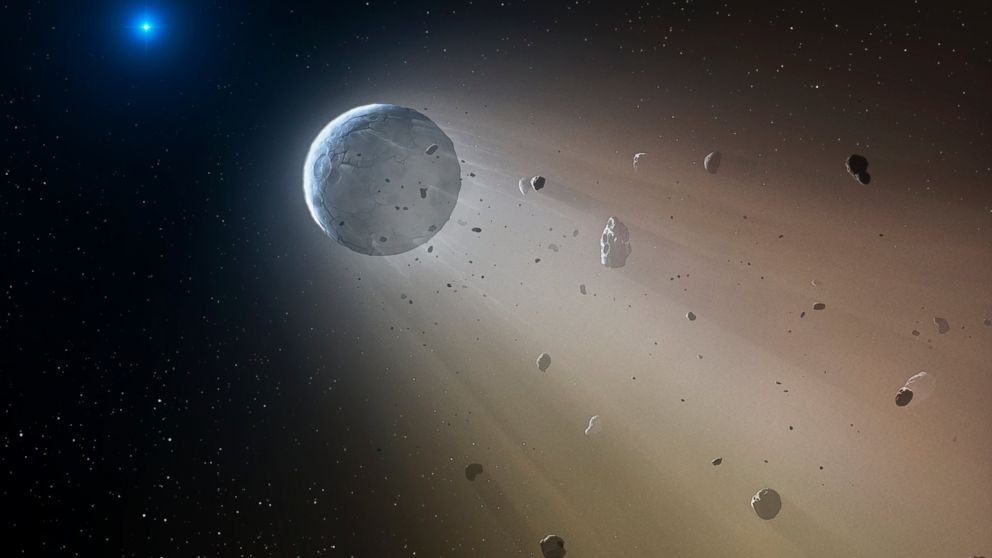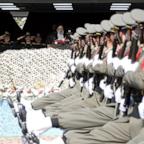How a NASA Probe Discovered a Planet Being Literally Torn Apart
NASA's K2 mission finds evidence of dead star vaporizing a mini planet.

— -- A world in another solar system is literally being torn apart by a star in the throes of death, according to a new study.
The cosmic catastrophe located 570 light years away in the constellation Virgo has been under observation from NASA's Kepler K2 mission, which watches stars, accounting for periodic dips in brightness that indicate something may be passing in front of the star.
Scientists observed a regular dip in brightness every 4.5 to 5 hours, indicating the mini-planet is transiting the white dwarf from 520,000 miles away, according to a study published today in the journal Nature.
While the main transit dimmed the star by as much as 40 percent, other data showed an unusual slope-like pattern that researchers said indicates the presence of an extended comet tail.
Putting these observations together, Andrew Vanderburg, graduate student from the Harvard-Smithsonian Center for Astrophysics and lead author of the paper, said he had his "eureka moment."
"The eureka moment of discovery came on the last night of observation with a sudden realization of what was going around the white dwarf. The shape and changing depth of the transit were undeniable signatures," he said in a statement. "We are for the first time witnessing a miniature 'planet' ripped apart by intense gravity, being vaporized by starlight and raining rocky material onto its star."
The material transiting the star is estimated to be the same size as Ceres, the Texas-sized dwarf planet located in the asteroid belt between the orbits of Mars and Jupiter.
A million years from now, no one will be the wiser about the ferocity of the white dwarf. As the white dwarf continues to rip the planet into pieces with its scorching heat, scientists expect all that will remain is "a thin metal dusting on top of an innocent-looking white dwarf star."




